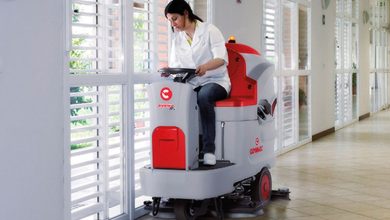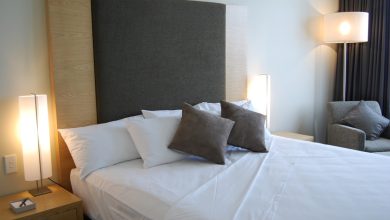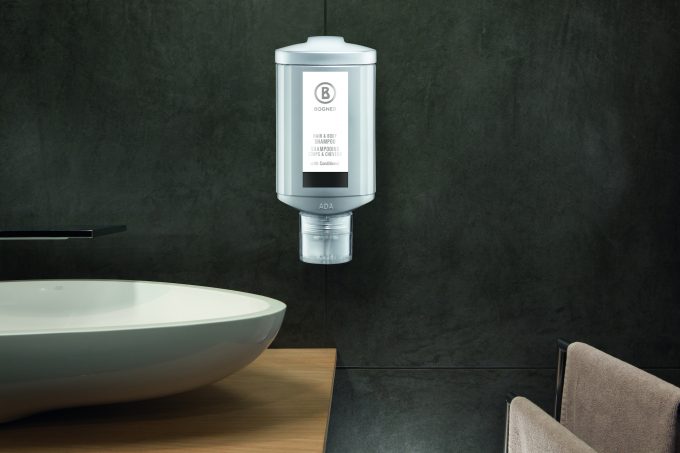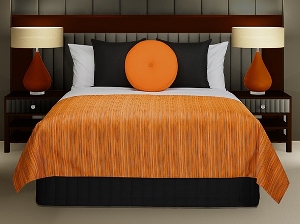Choosing Commercial Laundry Equipment
The high cost of water in/water out and the increasing cost of power means that accommodation and resort managers have to find an efficient and cost effective way to address in-house and guest laundry needs while minimising the impact on the environment.
The cost of outsourcing these services is often prohibitive and many sites are now investing in on-site laundry equipment. Here is a short guide to some of the things to consider when purchasing commercial laundry machinery.
Domestic or commercial quality: A domestic washer and dryer may seem attractive if you buy on price but in the long run it will cost you more. Domestic washers are designed for 3000 cycles on average loads whereas commercial washers are designed for 20000 cycles on full loads. Domestic warranties either do not apply or are reduced to 90 days in commercial applications and downtime and long term maintenance costs will be far greater.
The old adage ‘you get what you pay for’ certainly applies.
Commercial washers are more durably built with heavy duty motors, larger load capacities and offer considerably shorter cycle times than domestic machines meaning that you can wash more in less time.
Capacity and power needs: Larger capacity washers and dryers mean more throughput and greater efficiency in processing your daily wash requirements. An ideal capacity to start with is 10kg for washers and dryers. Machines smaller than 10kg capacity are may not have the capacity to meet your laundry needs and cost of operation (water/power/maintenance) may increase significantly with lower capacity machines. The size of the machine and the physical size of the laundry area and access doorways is the determining factor to the size of the machines that you can consider. Available power is also a consideration. Larger commercial washers may require three phase power while even basic commercial dryers designed to dry large loads require a minimum 20 amp power outlet.
Spin speed and G force: The G-force generated in the spin cycles is a key factor in machine selection but can vary from 220-420G between brands. Basically the higher the G-force the better the rinsing and fabric is far dryer at the end of the wash cycle, meaning less drying time and a dramatic reduction in energy needed to run the dryer. An ideal spin force on a 10kg machine should exceed 400G on high spin.
Direct drive Vs belt drive: Look for commercial washers with direct drive motors rather than the older belt drive type. Manufacturer data indicates that belt drive machines use up to 30% more power than direct drive machines and the regular maintenance requirement with belts, pulleys and gearboxes is eliminated in direct drive units, thus driving down operating costs and reducing water and energy consumption.
Water usage: It may be tempting to buy a top load rather than a front load because they are cheaper. However top load washers use a lot more water – as much as 130 litres a wash cycle more than front loading machines – and generate a significant amount more waste water. The table below shows a water in/water out cost analysis that compares a facility with four commonly available commercial top load washers versus the same facility with four x 10kg front load machines running eight wash cycles per day over a four year period and a water in/water out cost of $4 per kilolitre. As you can see the front loader offers significant water and operational savings compared to a top loader while offering a 25% capacity increase.
Programmability: A true commercial washer or dryer will have programmable cycles and simple one touch operation. Programming is accessible by the supervisor only and enables customisation of cycle times, spin speeds, number of rinses and water temperature, which means consistent wash outcomes, more throughput and lower overall costs.
Sanitation and chemical management: Manual dosing of powdered or liquid detergents and sanitisers has inherent issues including pilferage, overuse, poor cleaning outcomes, detergent residues in fabric, potential safety issues and higher costs. All of these issues can be overcome and detergent costs can be slashed by fitting automatic chemical dosing pumps to your machine. However, not all commercial machines are compatible with detergent dosing pumps and fitment may void warranty so it is important to ensure that the manufacturer or supplier can demonstrate compatibility.
Making space – stack or stand alone machines: Cleaning rooms are inherently small and it is important that you know the laundry system that you choose will fit and take up minimal space. The easiest solution if you have normal ceiling heights is to purchase stack washer dryers. Stack machines consist of a commercial dryer stacked on top of a commercial washer. Stacked machines use the floor space of a single unit and are only available in front loading configurations. Choose stack washers that can be assembled on site as large pre-assembled units may not fit into your doorway.
Coin operated guest laundry: Guest laundry equipment should also be of commercial quality. Again, the washers should be direct drive commercial models while the ideal capacity is 10kg for guest washers and dryers. A capacity of 10kg is ample for beach towels and lots of dirty clothes and prevents overloading that can cause complaints about wash quality and overall significantly reduces operational costs. Avoid mechanical coin mechanisms as there are numerous Internet tricks that your customer can use on mechanical mechanisms to get a free wash. Digital coin mechanisms cost a little more but are very difficult to fool as they use up to 15 different parameters to recognise the coin, meaning that slugs and foreign coins will be rejected immediately.
Supplier, service and parts: Supplier location is important as you need training and local support. Look locally before you buy. As with any machine purchase, it is important to determine the availability and pricing of common consumables. In commercial washers and dryers these include filters, door seals on front loaders, door latches, water solenoids, main boards and pumps and the location of suitably trained service agents.
The principles for choosing on-site laundry equipment are simple. They include capacity, durability, productivity, reliability, simplicity, reparability, operational costs and overall value for money.
Tick the boxes on each of these steps and your choice will be easy.
Brian Clark
Equipe Solutions P/L

AccomNews is not affiliated with any government agency, body or political party. We are an independently owned, family-operated magazine.







